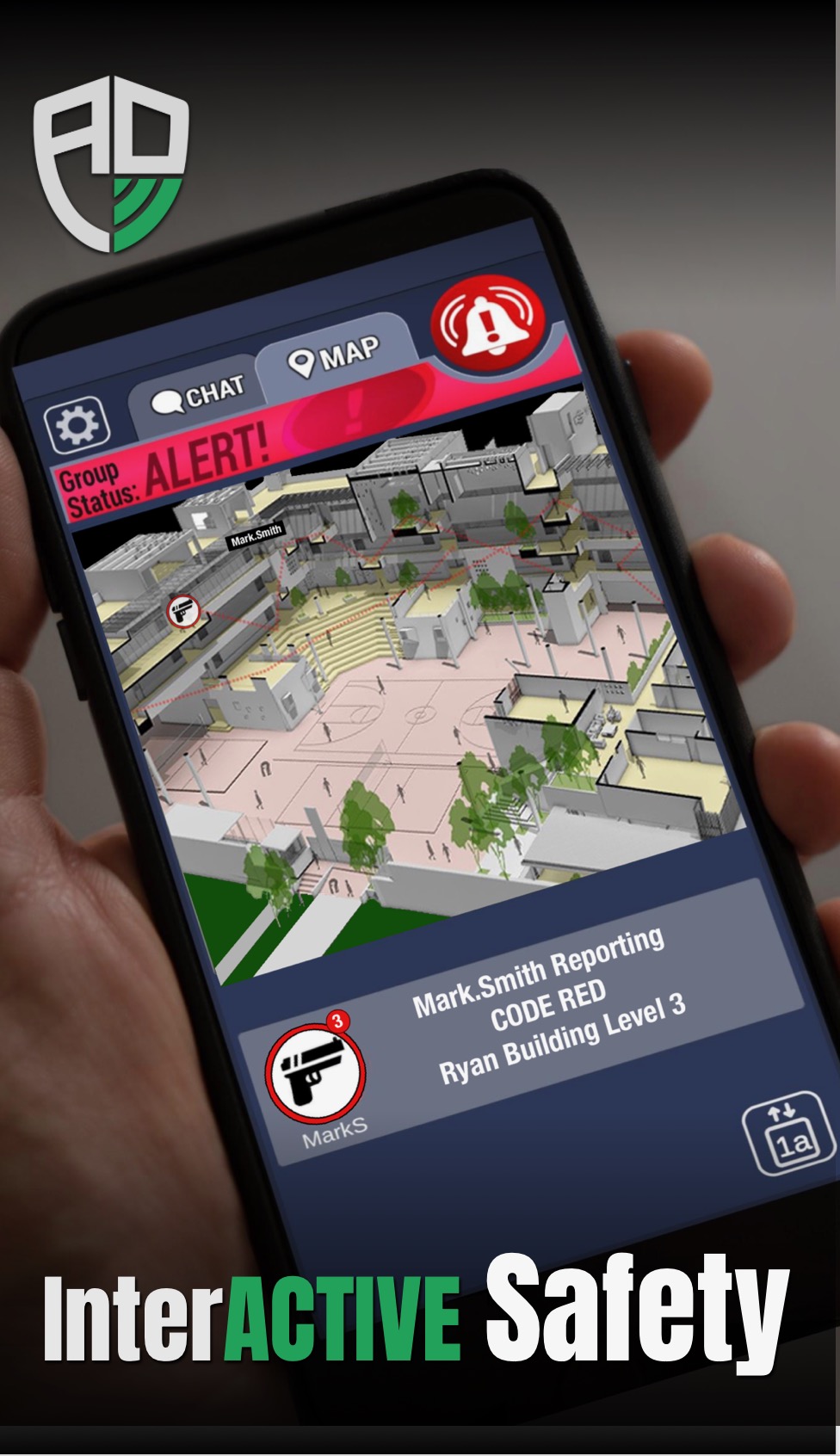
State-of-the-art app to assist in school emergencies
By Jenna Shackelford, posted Jul 29, 2021 on BizFayetteville.com

Jim Boyte used to work for USASOC as a developer. In his downtime in the evenings, he would clear his mind by helping schools with their safety and security best practices.
After some time, Boyte had an idea to build a sandboxing program, which is when multiple people function in the same virtual space together, popularly seen in video games like “Fortnite” and “Among Us.” He wanted help answering difficult questions surrounding safety measures at schools, and posed 15 different scenarios to evaluate what teachers would do in Moore County.
He asked the same participants to meet with him two weeks later to talk through the scenarios with drawings and pieces. Two weeks after that, Boyte had established the first minimal viable product for his app, “Active Defender,” in November 2018.
“Imagine back when you were in school,” Boyte said. “If there was an emergency at the school … Let’s say it was one of the worst emergencies like a fire or an active shooter. Somebody could sound an alarm, and we have spent millions and millions of dollars in the past 10 years to improve how quickly we can get in touch with first-responders so they can get to the scene, but it still takes four or five minutes at the very best.”
Even if first-responders are on campus, depending on the information, it can take four to five minutes for their arrival.
Imagine, he says, that you hear an emergency alarm.
“You don’t know exactly what the problem is and you don’t know where it is. And, therefore, if you’re not exactly in a place where you can lock down, and on average, 17 percent of the staff members and the students at any given time if it’s an unannounced emergency … you’re in an insecure location.”
For example, he pointed out that if a fire alarm goes off and a student heads for the door, there is a 50/50 chance that the student is going toward the problem instead of away from the problem.
“Our purpose of building Active Defender is to make sure that first-responders get incredible details, maybe more than they can get any other way,” Boyte said.
When someone sounds the apps alarm,the details about what the problem is and where it is immediately is sent to all of the staff, and can be sent to all of the students as well, depending on the preferences of the school.
The phones that receive the alert will go off like a critical alerts entitlement, which is the same as an Amber Alert or presidential alert. Apple approved these kinds of alerts for Active Defender.
Active Defender is a situational awareness tool because it connects an unlimited number of students, staff and family. People who use the app can show the actual problems by taking a photo, and the geographical location will show up in the map. As there are updates, people can continue to take photos and update the location and first-responders are in the loop. Depending on the emergency, the audience who receives the alerts can be customized.
“Everything good you see about Active Defender is because of the teachers and administrators and principals and the SROs in North Carolina who have been so gracious to share with us and say ‘Jim, if you and your team would tweak it this way, if you would add this.’”
One teacher expressed a problem to Boyte — the app had too many steps. She taught exceptional students, and explained that if a student had a medical episode, such as a seizure, in addition to using the app, she would have to handle the situation unfolding in her classroom, to include administering medication. She told Boyte that she needed to be able to press one button to send an alert of a problem. Boyte’s team curated a new feature to hold down on the button to automatically send a location from her classroom.
“To our knowledge, we are the only app in the world that does that with a multi-story, full mapping piece that works on any mobile phone or desktop. There are some real high-stakes players in our field … but nobody else can say, ‘Hey, there’s a fire on the second floor and it’s in the east wing,’ but we can show it and people can see it so people can see the problem.”
The app can even be used for other needs. For example, there’s a section that can be used specifically for custodial needs so people can report other non-emergency needs without alerting everyone.
The app is now used in 72 schools. About half are in North Carolina, but some are in West Virginia, South Carolina, Florida, Tennessee, Kentucky, Alabama, Texas and New Mexico.
“Normally if someone demos [the app], they purchase it. If they demo it, about 80 percent who demo it buy it,” Boyte said.
To learn more about Active Defender, visit https://www.active-defender.com/
Copyright © 2025
Enhanced Media Management Inc. dba
Greater Fayetteville Business Journal
This story may be displayed, reformatted and printed for your personal, noncommercial use only and in
accordance with our Terms of Service located at https://bizfayetteville.com/useragreement.